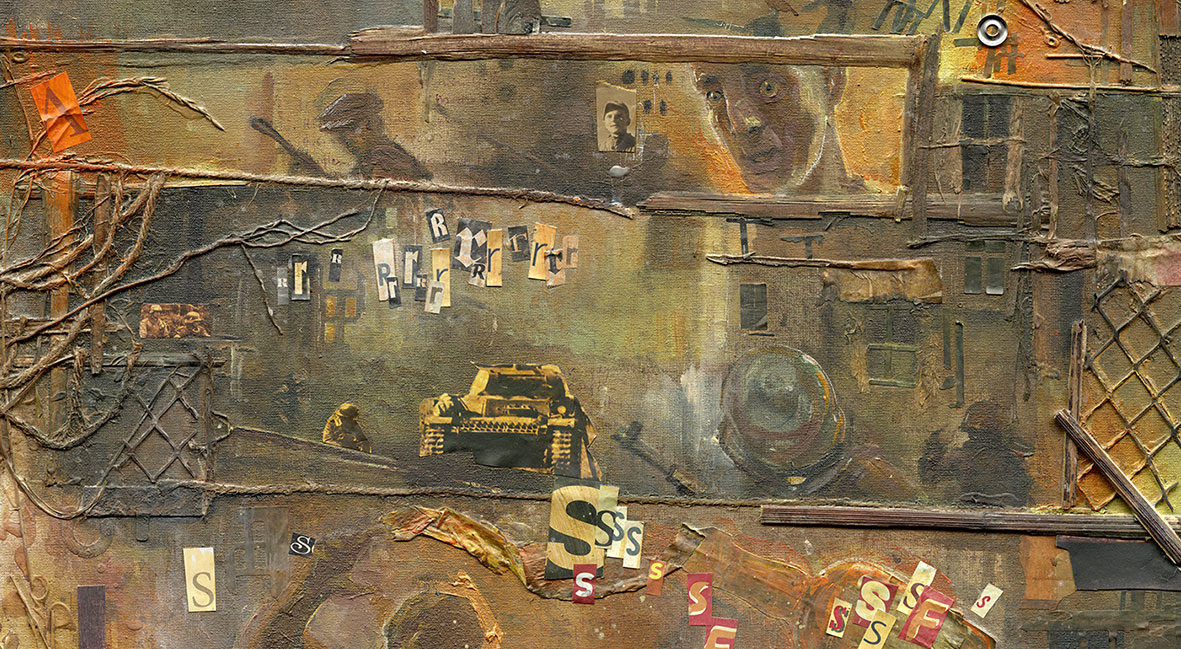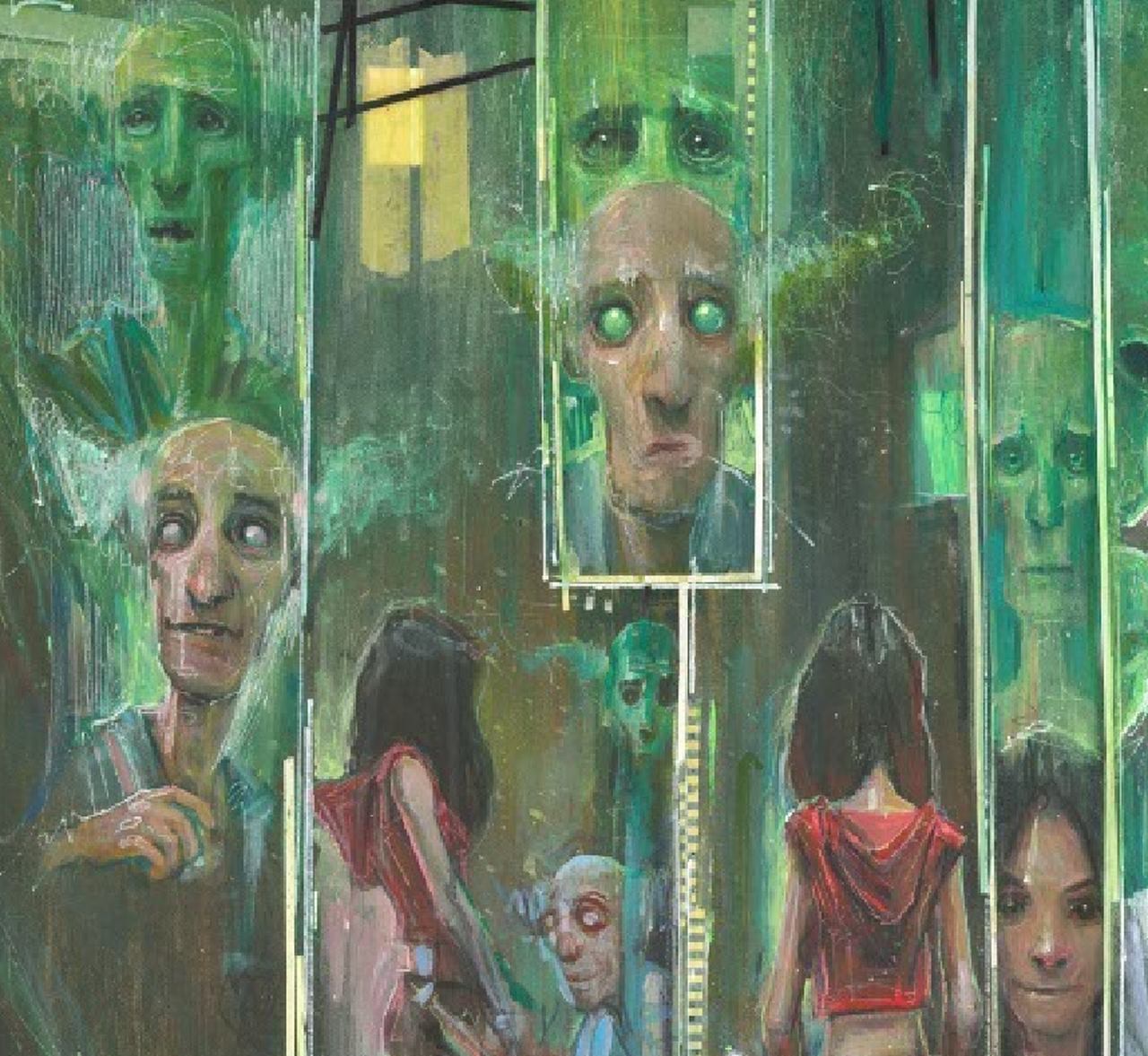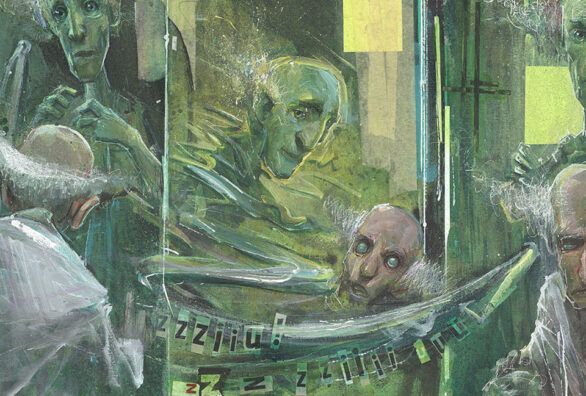
What does a good comic script contain?

Collaboration with a comic book writer

TANDE. Karol Weber/Gedeon
When the phrase "comic book scriptwriter" is uttered, the average bread eater usually thinks of the classics of the genre, such as the creator of "Asterix and Obelix" René Goscinny or our native fathers of comics: the late Papcio Chmiel, or more precisely Henryk Jerzy Chmielewski, or Janusz Christa. All of them, however, although the history of comics knows the names of screenwriters much more, were not only the creators of scripts, but also the executors of their creative intentions, i.e. cartoonists. Not necessarily by education - after all, Christa, the father of "Kajek and Kokosz" (by the way, the predecessors of the Slavic warriors were Kajtek and Koko, participants in Professor Kosmosik's experiment, confusingly similar to Kajek and Kokosz), was an economist.

Tales from the Ark - Clairvoyant. Karol Weber/Gedeon
However, there are characters in the history of popular literature who did not personally give graphic shape to their stories, but they were the ones behind the adventures of such heroes as the iconic Captain Wildcat. An example is precisely Wladyslaw Krupka (functioning in the literary world as Krupinski), a lieutenant colonel of the Citizen's Militia and a lawyer, who created Wildcat to warm up the image of the MO. Whether he succeeded - probably partly yes, since Captain lived to see reissues, but this text will not be about Wildcat. For Krupka can be successfully called a comic book screenwriter.
So what does a comic book screenwriter do? It is not so much the creator of the final version of the comic book, which gets into the hands of the reader, but its plot, that is, the arrangement of events told in the work, or, more theoretically, the arrangement of events of the world presented. It creates the scenario, that is, the series of events in which the characters and the characters themselves are entangled. Thus, important is the construction of the characters, their psychological traits, character traits, causing their fate or the events that befall them to have a definite course. It is also responsible for the aforementioned presented world, that is, the place and time in which the action takes place and the characteristic features of the subsequent characters. Whether it will be, as in Christy's case, a Slavic settlement or a post-apocalyptic land of zombies, the important details are those that, using even the stereotypical ideas of place and time, will allow the reader to feel the atmosphere of the world presented.
It is worth remembering that, of course, it is not uncommon to have a combination of drawing talent (or at least an interesting, distinctive style that forgives the lack of strictly artistic flair) and story writing skills, but this does not have to be the rule. A comic book scriptwriter is a separate entity, he can be responsible for the flow of the whole story and the characters appearing in it, but pass the drawing baton to someone else: a graphic artist, a painter, a draftsman, who automatically becomes a co-creator of the work, adding to it a personal style.
Such an arrangement combining the creators - a screenwriter and a visual artist - is, on the one hand, a fascinating adventure for two (and sometimes more) individuals, on the other hand, it requires from both of them the ability to convey their thoughts clearly, to listen and a certain flexibility. After all, the cartoonist must understand the vision of the screenwriter, so that in the artistic layer the comic book finally corresponds to what was born in the head of the screenwriter. Meanwhile, the comic scriptwriter's task is to present his vision and idea of the world presented and the realities and characters functioning in it in such a way that the illustrator sees these characteristic features, understands them, and ultimately knows how to reproduce them in subsequent frames. Each comic scriptwriter has his own way of writing the script, but in the case of co-creating a comic book with a visual artist, didaskalia come in handy. As in a classic theater script, it is in them that the author writes additional comments. The only difference is that the script of a play suggests certain issues to directors or set designers, sometimes to sound designers, while a comic book writer should give hints in the didascalia about the appearance of a place or character, include important details that, according to his vision, affect the shape of the whole story.
It is also very important to be able to describe frames properly, especially if the comic scriptwriter at some point imagines a particular image or a particular transition from one frame to the next. Any graphic note will be important for the cartoonist, for example, regarding the character's outfit, facial expression, hairstyle, or even a different font color in specific issues. Speaking of font, it is impossible to omit such an important element as texts. Of course, a comic book as a work of popular culture does not have to rise to literary heights, but nevertheless it should be written logically and correctly, without stylistic or, horror!, spelling errors. Contrary to appearances, correct punctuation is also insanely important - it is what allows you to create a context, allows you to read these texts, which are, after all, short, in the right way. Short, because a comic book can not be over-explained. This form combines the power of drawing and text, but it should be remembered that the text should not dominate the graphic layer. Texts are supposed to be only the quintessence of what the drawing depicts, otherwise the magic of comics, which by definition speaks primarily through image, disappears.
However, this image would not be created if it were not for the comic scriptwriter - he is the one who creates and then controls what happens on the subsequent boards. An important element of these boards, and therefore the subsequent frames, are absolutely the characters. And here the big role of the scriptwriter, to be able to tell the creator of the artistic layer of the work in a really clear way, how the characters should look like. It is on them, their characteristics, their facial expressions and general physiognomy that the content or course of events is often based. Therefore, the artist, before creating a scene-set, usually sketches each of the key characters, giving them a certain unique feature.It is good to create an image of the characters from different perspectives: en face, in profile, in motion - so that the sketched silhouette can serve as a model when it is necessary to sketch it again. This is because it is very important that in subsequent frames and scenes it is still the same character. Equally important is the overall image of a particular character, as well as its special features - so that the reader does not feel confused, and it should be remembered that the reader's eye can be really alert.
So, wanting to answer the question posed in the title: who is a comic screenwriter, it would be appropriate to say that, first of all, the originator and creator. Even if he puts the art layer in the hands of a professional graphic designer or illustrator, he is still the creator, standing behind the next steps in the implementation of his ideas. Therefore, one should not always associate him with the draughtsman, because although it happens that these two roles are intertwined in one person, this does not have to be the rule.
Related posts
Warning: Undefined variable $post_id in /home/klient.dhosting.pl/sprproject/devkomiks.sprintproject.eu/public_html/wp-content/themes/betheme-child/includes/content-single.php on line 379

Two Worlds - Rite of Passage. Karol Weber/Artur Biernacki
Warning: Undefined variable $post_id in /home/klient.dhosting.pl/sprproject/devkomiks.sprintproject.eu/public_html/wp-content/themes/betheme-child/includes/content-single.php on line 379

Tales from the Ark - Visions. Karol Weber/Gedeon